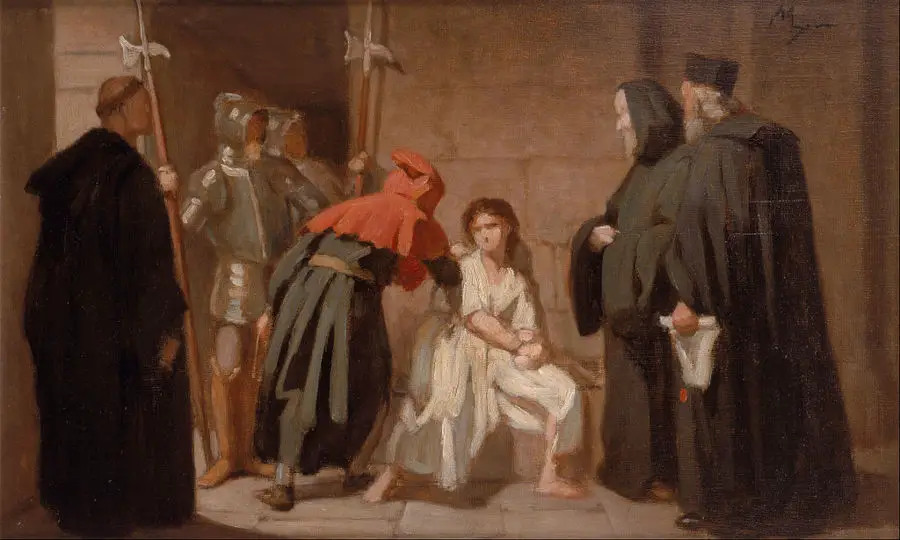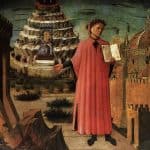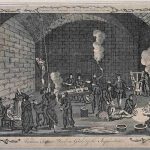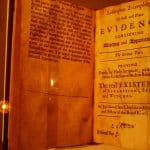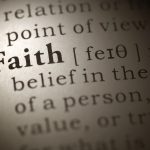In medieval times, the Church held massive influence in the affairs of the state and the people’s lives. In many instances, it held power equal to the governments and royalty. While the general populace might not have been able to fully grasp the nuances of state and social affairs that the Church saw fit to involve itself in, the masses would abide by the direction of the clerical class when it came to various matters of right and wrong.
In this paper, we’ll be taking a closer look at what the Church’s stance was regarding magic. The Church would determine what represented a danger to society, what was to be avoided, and, consequently, what was to be persecuted and punished. While this stance varied somewhat depending on the clerics and theologians in charge of Church doctrine, common strains persisted throughout and retained their relevance.
Demonic and Natural Magic during the Medieval Era
As defined by the theologians and intellectuals of the time, magic fell into two categories determined by the type of power that lay at the heart of it. Natural magic would be classified as any phenomena attributed to natural forces of nature or physics. In contrast, demonic magic relied on the invocation of supernatural or occult forces for its power.
The demarcation between the two was not clear-cut, especially in those early times when humanity’s grasp or understanding of the natural sciences was in its infancy. The Church initially considered both types of magic to be equally harmful and to be avoided. Early Christians had a limited understanding of what was naturally possible and considered everything outside their narrow understanding to automatically fall in the category of magic.
Tatian was a Christian theologian and author who, in his work titled ‘Address to the Greeks‘ (Oratio ad Graecos), maintained that all magic was demonic. He averred that items such as amulets and herbs had no inherent power but gained efficacy through the machinations of demonic forces in their efforts to enslave humanity and turn it away from God.
The Judaic congregations (Christians and Jews) held the belief that demons were fallen angels that sought to bring humankind into allegiance with them in their defiance of God. Aside from Tatian, other prominent theologians held beliefs along the same lines.
There is a course titled “The Witch Trials” from the Center of Excellence. Click here to see details (Aff.link). You can use our code “LIGHTWARRIORSLEGION466 ” for 70% off.
John Chrysostom, for instance, would vigorously rebuke women that sought the help of magical influence in their efforts to heal their sick children or conceive instead of following accepted Christian channels of doing so. This was part of a larger consensus that saw women as being particularly susceptible to the allure of magic.
Tertullian, the famous philosopher, would state that demons taught women the occult arts (herbal remedies mainly) owing to their receptiveness or susceptibility to the deceptive overtures of evil entities.
It is noteworthy that these voices would acknowledge that the herbs and remedies in question had the power to bring about tangible results. Still, their point of contention was that this knowledge was given to the practitioners by evil spirits or demons. Thus, this knowledge automatically fell into the category of demonic magic.
Augustine of Hippo can be argued to have had the most significant influence on medieval Christian attitudes concerning such matters. In his most well-known work, ‘The City of God‘ (Civitas Dei), he sought to respond to claims that the Roman Empire had fallen due to its conversion to Christianity.
As he saw it, the Pagan Roman traditions rooted in magical arts such as necromancy were the actual cause of its downfall. He believed that demons instructed people on the use of stones, plants, charms, animals, and other potent objects and would then use these objects as conduits for them to carry out their magical activities.
Related Reading: The Witch Stereotype and the Crime of Witchcraft – Opens in new tab
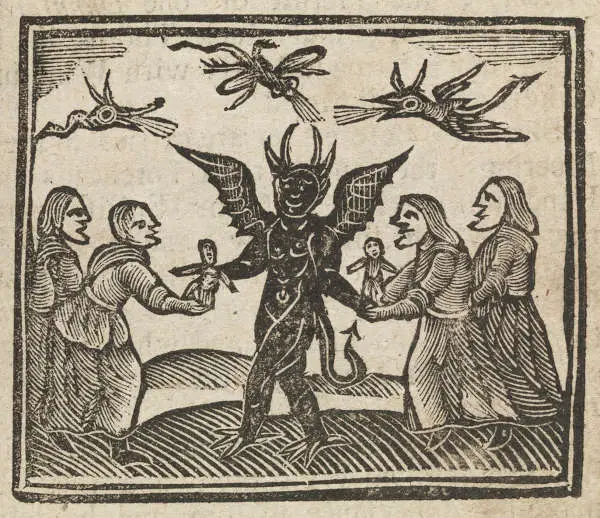
Even as he acknowledged the natural powers of natural objects or phenomena such as magnets and herbal remedies, he remained of the opinion that evil spirits yet lay behind them. With the growth of the Church, Ecclesiastical legislation was formulated denouncing magic, although Canon Law already forbade it.
In the town of Elvira, a synod held in the year 306 AD passed a decree aimed against persons found guilty of killing others through sorcery (‘maleficium’). It forbade their receiving communion, even as they lay on their deathbeds, for the sin of calling forth evil powers, considered a necessary component of such actions.
Though Roman law had hitherto punished only those using magic for harmful activities, the increasing dominance of the Church (as emperors converted to Christianity) saw the laws expanded to punish all types of magical activity. Such legislative acts can be seen in the Theodosian Code of 439 AD and the Justinian code of 529 AD.
As a centralized authority in Europe began to decline with the fall of Rome and cultural shifts subsequently began to evidence themselves, the Greek language and its literature diminished in prevalence. Vernacular dialects became widespread, and the Latin language was left to survive as the preserve of the educated class of the clerical elite.
Christianity would begin incorporating certain elements that were previously only found in pagan or pre-Christian societies to accommodate the changing demographic landscape, even as they continued to speak out against magic.
Historians can track the various types of magic encountered in this period by studying manuals used by confessors known as Penitentials. The various types of magic are listed alongside the commensurate penance that the offending individual was to perform in these volumes.
Confessing to ‘diabolical incantations,’ for example, would incur a particular penance. However, the priest or confessor would still hold to the position that magic does not have the power to influence people, change the weather, arouse love, or any other capabilities that would challenge their belief in God’s all-encompassing command of the universe.
Even those who believed such notions but did not practice magic were to do penance, but the Penitentials would only address actions rather than people’s thoughts at the time. This, however, was soon to change.
Natural Magic Declines
Early Christian theologians up to the 12th century saw magic as the direct intervention of evil supernatural entities in human affairs. They saw magic as taking on various forms such as hydromancy, geomancy, pyromancy, and aeromancy (divination through water, earth, fire, and air, respectively). Also included were divination through astrology, observing animal entrails and bird activity, and various enchantments and phenomena.
Changes came in the 13th century as distinctions began to appear between demonic magic and natural magic. The bishop of Paris, William of Auvergne, was a prominent voice alongside others such as Saint Albert the Great, the patron saint of the experimental sciences.
New areas of knowledge were also springing up, including alchemy and scientific astrology, which employed more rigorous methods and advanced methods while laying claim to ancient philosophical and scientific heritage.
The earlier cathedral schools would give rise to universities, and Arabic learning would find its way to Europe alongside Aristotelian science and philosophy. All this would greatly influence the intellectual spirit of Europe.
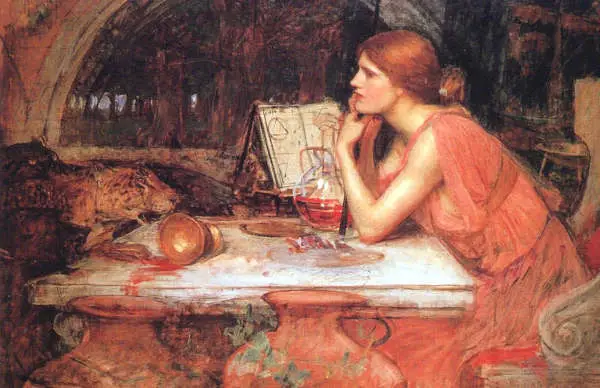
Though alchemists and astrologers did not view their practices as magic, many viewed them as such until the medieval era’s end. Thomas Aquinas, the patron saint of scholars, was one of those who saw all magic as inherently demonic though refrained from using the term ‘magic’ to cover many natural phenomena such as the action of planets and stars. In his work ‘Summa Against the Gentiles,’ he specified that the term was only to be ascribed to matters evidencing the direct intervention of demons.
Where his argument seemed to revert to earlier attitudes was his assertion that even such phenomena as might not be instigated by demonic forces would still bear their taint. This is since these practitioners would have received their super-human knowledge from supernatural beings of some sort.
Early Christian theologians continued to warn against the invocation of evil spirits through to the end of the Middle Ages as the fear of magic grew to a fever pitch. Still, it was risky to assign too much power to the capabilities of demonic forces in influencing the natural world. The problem lay in allowing for their power without taking away from God’s position as the overarching mover of all creation.
Related Reading: “Medieval Witch Trials in Europe”– Opens in new tab
Superstition and Magic in the Middle Ages
The conundrum gave birth to the term ‘superstitio,’ which was used to encompass all charms, gestures, words, or practices that, even though they might not evince direct demonic action, still derived inspiration from them and thus were sinful. These included the remaining bits of what had once been widespread pagan practices such as medicinal herbs, offerings, curses, and rituals related to natural phenomena such as springs and wells.
While legislation against such acts sought to punish practitioners in correlation with the observable harm done to others, the Church sought to mete out reprisals owing to the offense against God that such practices represented.
Even so, the secular and ecclesiastical authorities had limited success in wiping out the practice of magic among the populace. As the Dominican and Franciscan friars rose to prominence as preachers, the question of magic would be a frequent theme for their sermons.
The Franciscan missionary Bernadino of Siena, patron saint of advertising, would play an instrumental role in developing a system that would prove to be one of the most effective methods of persecuting magic and its practitioners. The medieval inquisitors who would be the functionaries of this system would serve as the flagbearers or would prove to be one of the darkest chapters in the history of the Church.
Do you want to learn more about Magick? Check out our recommendations at “Magick Bookshelf” and many free resources at our “Free Magick Library“
Resources
- Course, Magic in the Middle Ages by Universitat De Barcelona from Coursera
- Cornell University Library: https://rmc.library.cornell.edu/witchcraftcoll/
- Medieval Sourcebook – Witchcraft Documents: https://sourcebooks.fordham.edu/source/witches1.asp
- Inquisition records: https://www.york.ac.uk/res/doat/
♦ If this article resonates with you, please join our newsletter by using the forms on this website so we can stay in touch.
Stay in Touch
 Join our newsletter by using the forms on this website or click here!
Join our newsletter by using the forms on this website or click here! Follow us on Google News
Follow us on Google News Follow us on Facebook
Follow us on Facebook
Featured Image: Edouard Moyse – Inquisition. From Wikimedia Commons

